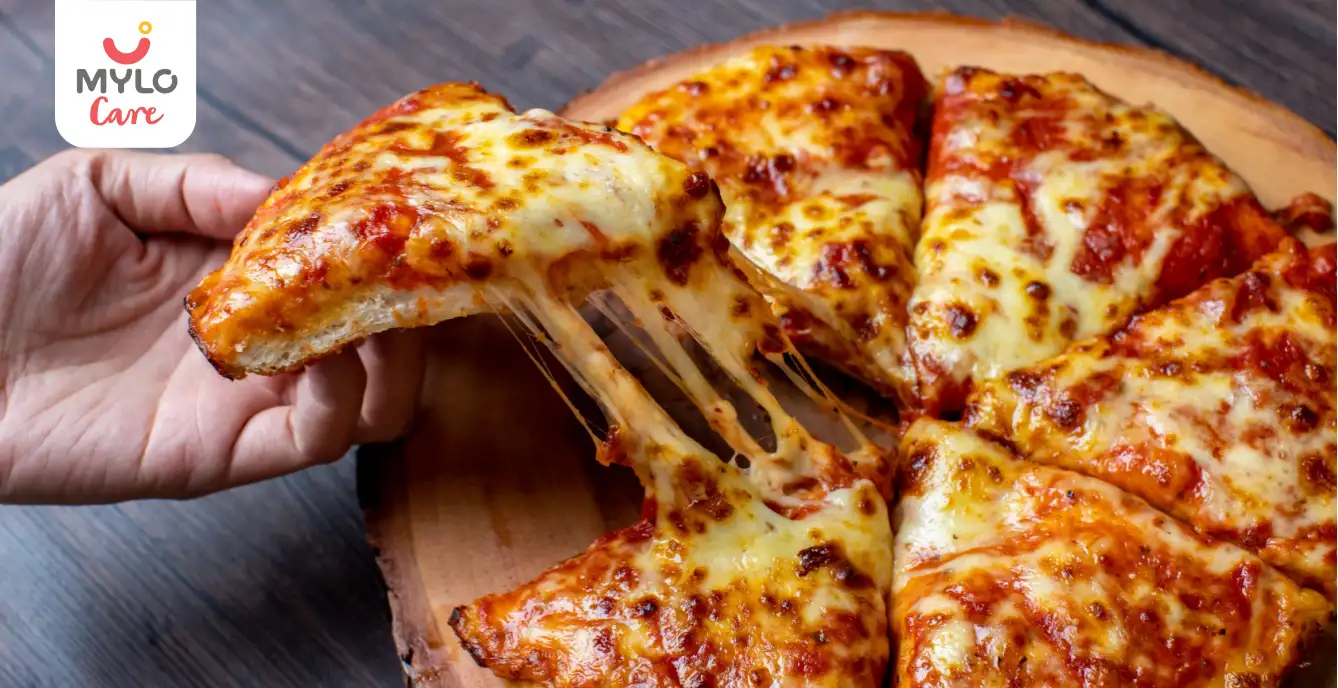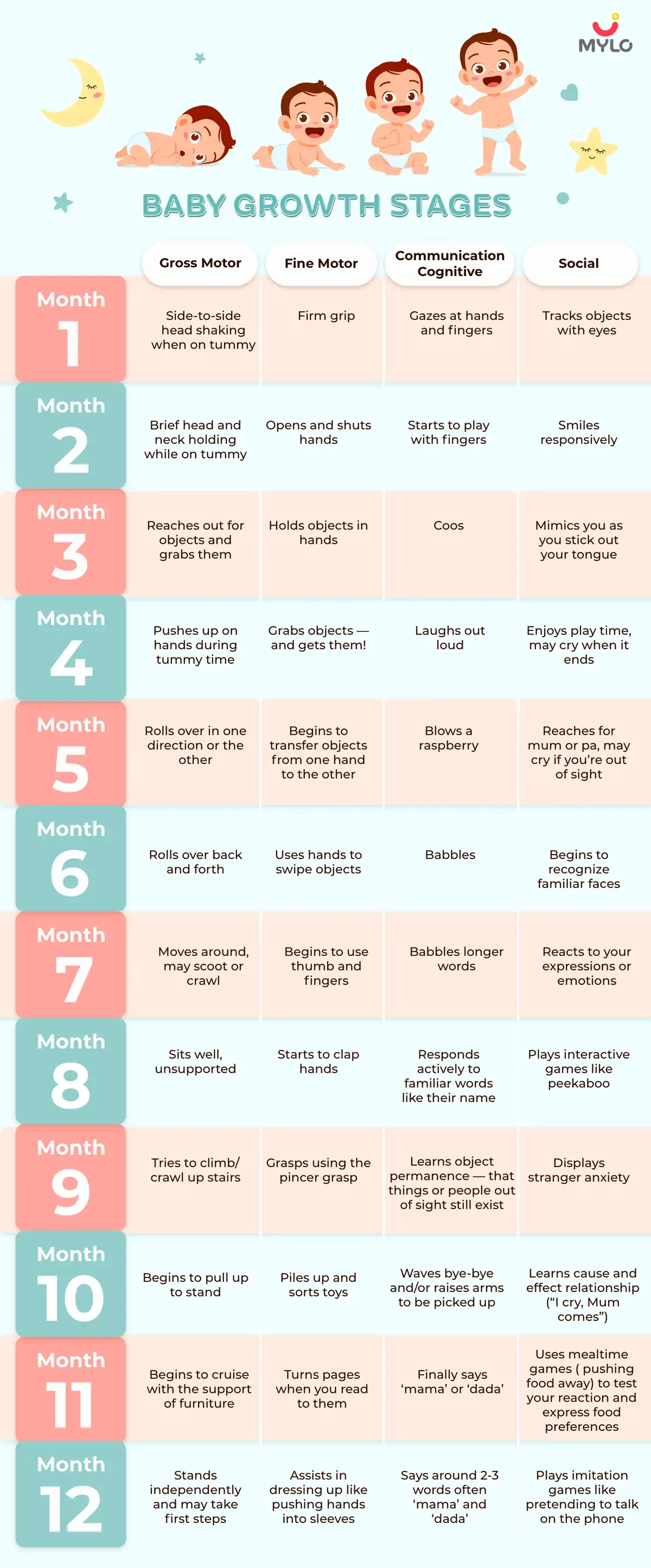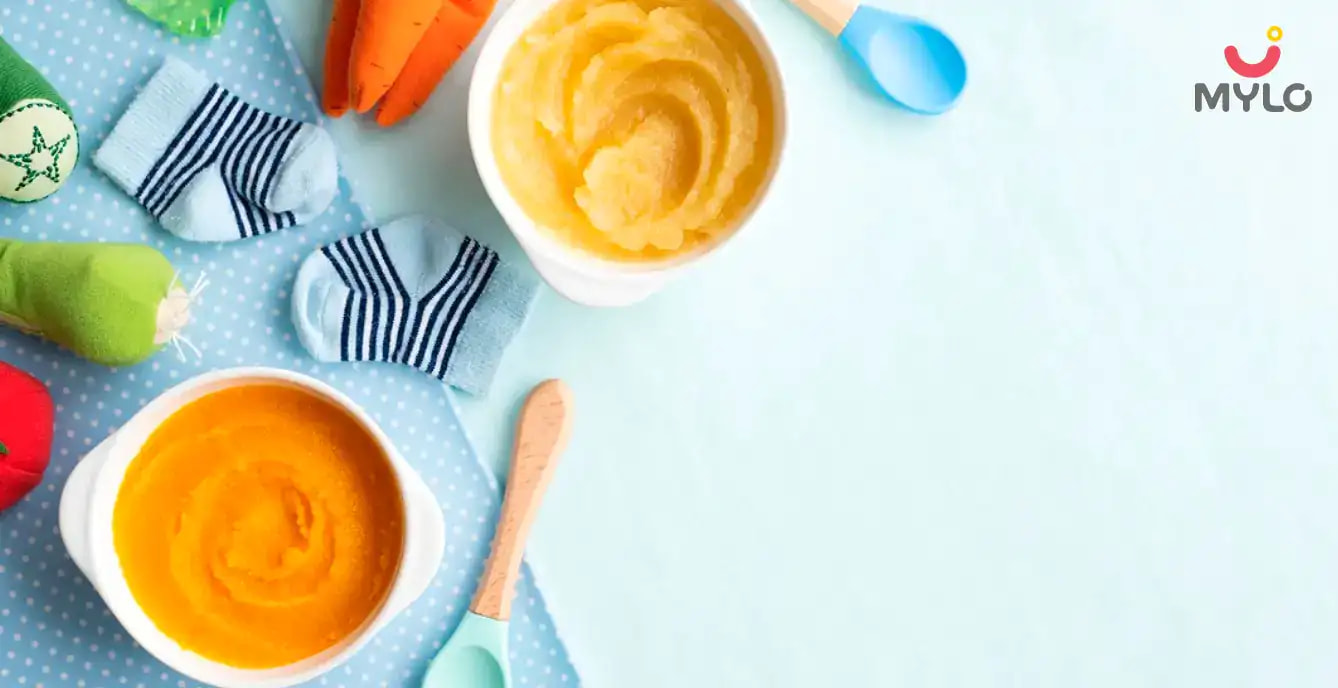Home

Diet & Nutrition

How To Prepare Food For Your Infant/Toddler Safely? Here Are Some Tips That You Must Not Forget While Preparing Food
In this Article

Diet & Nutrition
How To Prepare Food For Your Infant/Toddler Safely? Here Are Some Tips That You Must Not Forget While Preparing Food
Updated on 5 March 2024
Repeat after me: eat, sleep, pee? Oh no! A day in the life of a new infant is filled with moments like these. If your baby is growing and you are planning to help your child start with solid food, then you are sure to come across numerous challenges. However, this guide to customizing your own baby diet chart will help you to decide what food your baby can begin with and what valuable tips you could incorporate when cooking food.
Some questions arise about feeding your child if you're a new parent. How many ounces should your baby be consumed? Why do they seem to be constantly hungry? When can your toddler begin eating solids?
There are a lot of unanswered questions despite Grandma's best efforts, and the answers have evolved since you were a baby. Now, it's suggested that infants, even those given formula, feed whenever they want and that babies wait until they're 4 to 6 months old to begin eating solid meals.
How Can You Schedule your Child's Meals According To Their Age?
As a newborn, your baby's stomach is the size of a marble and can only contain between one and two tablespoons of fluids at a time in its stomach. Your baby's stomach expands and contracts as they get older. While nursing, it's tough to tell how much milk your baby is consuming. On the other hand, bottle feeding is much simpler to gauge for various good reasons.
Consider feeding your child every two to three hours when it comes to toddlers. This way, your child is sure to consume something at least six times a day, including snacks. Breastfed newborns eat more regularly than bottle-fed ones. However, this is not a universal truth. Breast milk is more quickly digested and expelled from the gastrointestinal tract than formula, which takes longer to leave the digestive tract.
How Do You Establish A Regular Eating Routine?
Initially, every parent's dream is to have a proper schedule for their baby, for example, a diet chart for a 1-year-old baby that works for them and their children. A feeding schedule will develop as your child's stomach expands, and they can consume more breast milk or formula in a single meal. This may begin to occur between the ages of two and four months.
The most important thing to do right now is to get to know your baby's hunger signals, such as:
-
Searching your breasts for a nipple
-
Fist-smacking, lip-licking, and other behaviours that may increase fast (don't wait till your baby's hungry to feed them) are all examples.
-
You may be able to establish a sleep/feed routine that works for you and your kid after a few months of age, like a 1-month-old baby's feeding and sleeping schedule.
How To Get Your Baby To Start Solid Foods
A 4- to a 6-month-old infant is typically ready to start eating solids.
-
Control one's head well.
-
Show an interest in what you're consuming
-
Assume you weigh at least 13 pounds
What's the best way to get started? It's no longer a big deal, according to the AAP, what sequence you introduce meals in. Keeping the same meal for 3 to 5 days is the only guideline. You'll be able to pinpoint the exact food causing allergic reactions.
How To Feed As Your Baby Gets Older?
Make the transition from pureed baby meals as your child gets older to foods with greater texture (mashed banana, scrambled egg, or well-cooked, chopped pasta). Between the ages of eight and ten months, this is when most babies begin to cry. If you want to prepare your baby food, avoid adding sugar or salt to the recipe. Aside from that, avoid giving your kid anything that might choke him at this point.
Foods such as popcorn or nuts, as well as fresh fruits and vegetables, such as apples, should either be boiled to soften them or chopped extremely finely if they are raw meat (this includes hot dogs). If you're concerned about introducing diluted peanut butter before 1, speak to your physician.
A variety of meals should be available to your baby as they approach their first birthday, with around 4 ounces of solid food being ingested at each mealtime. Remain open to providing either breast milk or formula to children. The average 8-month-old baby drinks 30 ounces of water each day.
What Are Some Of The Useful Tips To Consider?
Life would have indeed been simpler if you made the food, and your baby just ate it. However, the reality can be way far from an ideal situation. New parents constantly have to learn new tricks and tactics in order to get their children to eat. By utilizing some of the helpful tips below, you can feed your child in an easy manner!
How Much Is Your Child Willing To Eat?
Right before you start with a few things, it is essential you consider how much quantity your child is consuming. In fact, today's culture involves telling children "finish off your food" or "just one bite". However, it may be crucial for you to understand that your child is intuitive enough to realize when to eat and when to stop.
Since they will be consuming food either 5 or 6 times a day, they are sure to meet all their nutritional requirements. Therefore, this is sure to result in a pleasant mealtime experience than forcefully feeding your children. Most importantly, consider being as patient as possible when feeding your kid.
Parents can decide what needs to be served on the plate, when is the right time to serve, and which place could be the best to serve food. However, your children should have the privilege to decide how much can be eaten in a day. Try not to force them to overeat.
Introducing Solid Foods In The Toddler Diet Plan
A six-month-old baby is usually ready enough to consume solid foods. A balanced diet for a 1-year-old baby includes fruits, meat, baby cereals and a lot more! Make sure to go for foods that are rich in iron. Apart from that, learning an infant CPR procedure can be quite beneficial since some food items may turn out to pose a choking hazard.
Your child may initially start gagging at the food. However, this is just a reflex action, and there is no need to worry. Try being as patient and calm as possible. A few foods, such as peanuts and milk, may be allergenic. Make sure to introduce these foods as early as six months. Yet again, try not to feed your baby forcefully.
Feeding 6 To 7 Month Babies
Consider feeding your child cooked and minced meat or even patties. Apart from that, mashed eggs or even an omelette could be an excellent source of protein for your child. You can also consider feeding your baby with chickpeas or beans purée.
A few of the other edibles include fruits such as avocados and bananas, yoghurt that is either plain or even Greek, as well as cheese. Your child will also be able to consume quinoa, oats, bread as well as iron-fortified cereals.
Feeding 8 To 9 Month Babies
By this age, you can include a few more food items such as cooked pieces of fish or even meat. Apart from that, lentil patties can turn out to be an excellent source of iron. Try feeding your child peeled apples or carrots. Your baby is sure to love raspberries and strawberries as well! Consider introducing foods such as pasta and peanut butter as well!
Feeding 10 to 13 Month Babies
Since your baby will have better dexterity now, you can try introducing poultry and whole-cooked beans into the diet plan. Steamed vegetables with tender pieces of chicken could also turn out to be a nutritious meal! Your child can try out dried fruits and sliced grapes as part of their one-year baby diet chart! When it comes to grains, introduce pasta as well as barley when serving meals. Yet again, make sure not to add much salt. You can also serve ravioli along with vegetable soup.
Feeding Toddlers
By the time your child is a year old, it is alright for them to consume cow's milk. However, if you are still breastfeeding, it is great too! Yet again, it may be vital for you to transition from baby bottles to baby cups. Your child can also use the straws in order to take better sips.
Try teaching your child to self-feed. During this phase, introducing a spoon or a fork may turn out to be an excellent idea. Make sure not forcefully to feed your child. Apart from that, setting up a mealtime schedule can help you in numerous ways. Thus, this way, your child will be able to fill up their small tummy in no time!
Make sure to reduce the consumption of sweets for your baby. Your child should not be filling their tummy with candies and cakes but with nutritious food instead! Although this phase may bring in a lot of tantrums, make sure to remain calm and patient.
Give easy instructions that may not frustrate you or your child. Since your child is constantly watching you, trying out a mirroring technique could help you ease the situation. Yes! This also means that you will have to consume vegetables too!
Conclusion
After a certain time has passed, you will realize that your child's eating habits have become more unpredictable. However, you do not have to worry about such a situation at all. It is normal for your child to become a bit more selective when it comes to making food choices and yearn for more control. In fact, this may also be a stage when your child's appetite might have slowed down considerably.
Toddlers usually need approximately 1300 calories every day. Yet again, you wouldn't want to count the number of calories your child is consuming. You may also come across situations where your toddler may throw a tantrum and refuse to eat any food at all. However, it is indeed crucial for you to understand that this is just a phase, and there is a lot of learning to be done. All you have to be is patient and calm!



Written by
Loveleen Gupta
A working mother with more than two decades of experience in writing for the publishing industry and digital space, Loveleen Gupta loves dabbling in creative writing also. A graduate from Miranda House, she uses her personal experiences to express herself.
Read MoreGet baby's diet chart, and growth tips

Related Articles
Related Topics
RECENTLY PUBLISHED ARTICLES
our most recent articles

Negative Brand Discussions
Lactational Amenorrhea Method: A Safe and Effective Contraception for Postpartum Moms

What to Do to Help Fall Asleep Faster During Pregnancy?

High Blood Pressure in Pregnancy
Home Remedies to Control High Blood Pressure in Pregnancy

Food Cravings
Pizza During Pregnancy: Cravings, Comfort, and Caution for Moms-To-Be

Growth Charts
Baby Milestones for Development, Growth & Health in the First Year

Festivals & Celebrations
The Ultimate Collection of International Women's Day Quotes
- The A-Z Guide to Identifying Vegetables Name in English for Children
- Grapes in Pregnancy: The Ultimate Guide to Benefits & Precautions
- Postpartum Exercise: What to Know About Exercising After Pregnancy
- Baby Crawling: A Parent's Guide to Baby's First Moves
- Postpartum Diet Plan: Your Postpartum Nutrition Guide
- The Ultimate Guide to Crafting the Perfect Baby Photoshoot
- Lupride Injection: How It Works and What You Need to Know
- Why are Some Women Recommended HCG Injection During Pregnancy?
- Sudden Infant Death Syndrome (SIDS): Meaning, Causes & Prevention
- Period After Abortion: What to Expect About Timing, Duration and Frequency
- Thumb Sucking: How to Help Your Child Break the Habit
- The Ultimate Guide on How to Shrink Ovarian Cysts Naturally
- Ashwagandha Benefits for Female & Male Fertility: How This Ancient Herb Can Help You Conceive
- What are the 12 things that parents can do with their baby in the first 12 months?


AWARDS AND RECOGNITION

Mylo wins Forbes D2C Disruptor award

Mylo wins The Economic Times Promising Brands 2022
AS SEEN IN
















- Mylo Care: Effective and science-backed personal care and wellness solutions for a joyful you.
- Mylo Baby: Science-backed, gentle and effective personal care & hygiene range for your little one.
- Mylo Community: Trusted and empathetic community of 10mn+ parents and experts.
Product Categories
baby carrier | baby soap | baby wipes | stretch marks cream | baby cream | baby shampoo | baby massage oil | baby hair oil | stretch marks oil | baby body wash | baby powder | baby lotion | diaper rash cream | newborn diapers | teether | baby kajal | baby diapers | cloth diapers |








